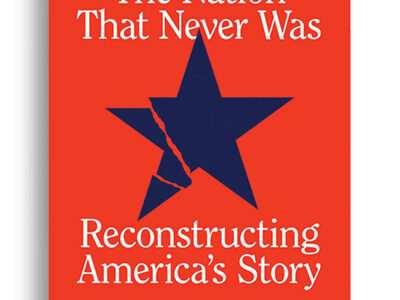There’s negative, and then there’s negative.And in a recent study of American voters’ attitudes, the Annenberg Public Policy Center found that when it comes to campaign ads, the public has a better grasp of such subtle distinctions than do the experts.
“While pundits, reporters, and academics tend to lump all political ads that attack an opponent’s position under the universal term ‘negative,'” a synopsis of the survey noted, “voters are making finer distinctions between ads that contain attacks and ads which they see as ‘negative’ or bad.”
The survey found that voters distinguish between ads that are “two-sided contrasts and those that are one-sided attacks,” between ads that are “civil and those that are inflammatory,” between those “that criticize policy and those that attack personal life,” and between accurate and inaccurate ads.
The basic concept was not exactly news to Dr. Kathleen Hall Jamieson, the center’s director and lead author of the study; she had laid it out in her 1992 book, Dirty Politics: Deception, Distraction, and Democracy. But the survey of 2,000 adults has given her empirical confirmation.
“We have seen evidence from focus groups for a long time that says that the public does not object to attack; it objects to illegitimate attack, and there’s a fairly clear sense of what constitutes illegitimate attack,” said Jamieson, the professor of communication who also serves as dean of the Annenberg School for Communication. “The answers from the survey were consistent with the answers we saw in the focus groups — which suggests that the public doesn’t like hyperbolic or inflammatory attack; it prefers contrast to pure attack; it doesn’t like attack that is personal; it wants issue-based attack; and it does not like attack that is inaccurate. And that’s actually a pretty sophisticated taxonomy.”
After all, Jamieson pointed out, “If you take attack out of politics, and you take legitimate differentiation out, what’s your basis for voting going to be?”
Asked how the center’s findings were borne out by last November’s elections, Jamieson replied: “It’s hard to draw an inference from the explicit content of a campaign ad to effects on an audience, but what appears to be the case is that the candidates who ran very strong attack-driven campaigns with the least contrast did not do well” — the most notable examples being North Carolina Senator Lauch Faircloth and New York Senator Alphonse D’Amato, both of whom lost in hotly contested races. “Candidates who ran a higher level of contrast,” she added, “appeared to have done better.”
Actually, last year’s campaign had an “unusually low level of pure attack,” Jamieson said. “Search the newspapers and figure out how many reporters actually managed to figure that out.”
One problem is that when many reporters see an ad that both attacks and advocates, they call it an attack ad, she explained. “But why, if it attacks and advocates, wouldn’t you call it an advocacy ad? I mean, if you’ve got a choice and you’ve got both of them, why don’t you make it a new category and call it a contrast ad?”
While Jamieson said she would like to “extinguish journalistic use of the word ‘negative,'” it wasn’t until the 1988 Presidential campaign between George Bush and Michael Dukakis that it became used and abused by the press in polling. “One of the unfortunate byproducts of the concern with the quality of that campaign on both sides — it was just not a particularly ennobling campaign — was the adoption by the press of a vocabulary that is not helpful: that is, taking everything that’s attack and saying that it’s ‘negative’ and that ‘negative’ is bad. And we can chart that. We actually can show how many polling questions were asked that had the word ‘negative’ in them — not very many until ’88, and then all of a sudden, it becomes a normative press question.”
It’s interesting, she said, “to see the press, which assumes that it is an elite outlet in society, making assumptions about how the world works that are radically different from [those] the readership and viewership makes. It’s a category of thought for reporters, and it’s not for voters. That disconnection is very intriguing. And the larger question is, ‘Why hasn’t the press figured out that a whole category of campaign coverage just isn’t very helpful for voters, because the world doesn’t parse that way for them?'”
In the center’s survey, randomly selected voters were shown hypothetical examples of “attack” ads and “contrast” ads.
| ATTACK | CONTRAST |
| “Social Security is in trouble, but my opponent’s plan for saving it will not work. My opponent wants to allow people to invest their Social Security contributions in the stock market.” | “Social Security is in trouble, and here is what I promise to do about it. We should use the federal budget surplus to make the program financially sound. But my opponent disagrees. My opponent wants to allow people to invest their Social Security contributions in the stock market.” |
While only 37 percent of the respondents found the
attack ad “responsible” and 40 percent found it “useful,”
65 percent found the contrast ad responsible and 75 percent found it useful.
Sixty-eight percent said they were “turned off” of politics
by the attack ad, compared with 42 percent by the contrast ad. That positive
assessment of contrast ads, the study found, “cuts across all demographic
groups.”
One should not, however, conclude that the public is
so discerning that we don’t need to worry about any negative ads,
Jamieson cautioned. “Actually, we do need to worry, because the public
says that it’s making the distinction between what’s misleading and what
is not, but in the study, we told them that [one ad contained]
a misleading claim. And the question is, would the public” — which
has other things on its mind — “have had sufficient help from the
press or the other candidates to have determined that it was a false claim?
We’re not really in that domain with this study.”




